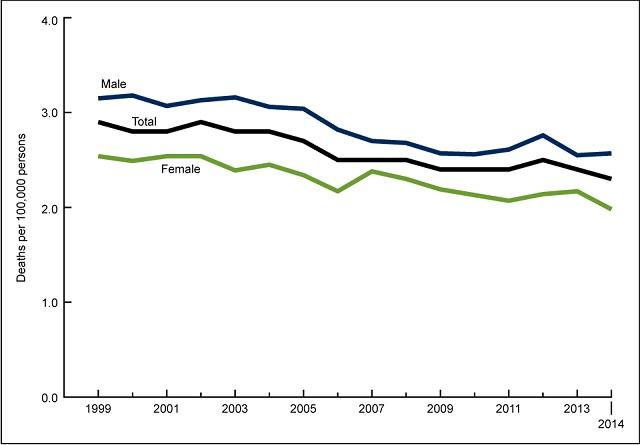-
Tips for becoming a good boxer - November 6, 2020
-
7 expert tips for making your hens night a memorable one - November 6, 2020
-
5 reasons to host your Christmas party on a cruise boat - November 6, 2020
-
What to do when you’re charged with a crime - November 6, 2020
-
Should you get one or multiple dogs? Here’s all you need to know - November 3, 2020
-
A Guide: How to Build Your Very Own Magic Mirror - February 14, 2019
-
Our Top Inspirational Baseball Stars - November 24, 2018
-
Five Tech Tools That Will Help You Turn Your Blog into a Business - November 24, 2018
-
How to Indulge on Vacation without Expanding Your Waist - November 9, 2018
-
5 Strategies for Businesses to Appeal to Today’s Increasingly Mobile-Crazed Customers - November 9, 2018
Brain cancer overtakes leukemia as deadliest form of childhood cancer, CDC says
The report, released by the National Center for Health Statistics of the U.S. Centers fo Disease Control and Prevention, stated that cancer deaths among kids have seen a 20 percent decline from 1999 to 2014.
Advertisement
Almost 30 percent of the estimated 1,960 childhood cancer deaths that year were due to brain cancer, and 25 percent were the result of leukemia, according to the report published Friday by the CDC’s National Center for Health Statistics.
Data showed that nearly 30 percent of cancer deaths in kids and adolescents in 1999 were attributed to leukemia and only about 25 percent were attributed to brain cancer.
There are still more new cases of leukemia each year than new cases of brain cancer, but it no longer accounts for the most deaths. However, in 2014, brain cancer topped the list of the deadliest cancers among children, accounting for 29.9 percent of cancer deaths within the said age group and putting leukemia at second place.
And even though the death rates for childhood cancer have fallen, the overall incidence of cancer in children and teens has risen slightly, from 16 per 100,000 in 1999 to 18 per 100,000 in 2013, the most recent year for which data is available.
The cancer death rate was higher for older teens – 2.9 deaths per 100,000 adolescents between the ages of 15 and 19 – than for any other age group.
This article was originally published by Business Insider. “For pediatric brain tumors in particular, we have not made significant headway at all”, said Katherine Warren, head of pediatric neuro-oncology at the National Cancer Institute, reported The Guardian. By 2014, these rates flipped, with brain cancer (29.9%) becoming the leading cause of cancer deaths among 1-19 year olds.
The report also said that other sites of cancer most children suffer from included the bone and articular cartilage, thyroid and other endocrine glands and mesothelial and soft tissue.
Overall, the five-year survival rate for children diagnosed with all forms of cancer rose from 64 percent in 1975 to 84 percent in 2011, according to data from the American Cancer Society and Alliance for Childhood Cancer.
The five-year survival rate for neuroblastoma is now 78 percent, but that can dip to about 40 or 50 percent for high-risk cases.
Pediatric cancer research efforts are hampered by a variety of hurdles, says the ACS report.
Though keywords such as “cancer” and “children” are usually connected to heartbreaking stories, Cutin’s study actually uncovered positive findings. In 2004-2010, more than 80 percent of children diagnosed with cancer before age 20 years survived at least 5 years.
Another hurdle is a lack of market incentives to draw industry investments in childhood cancer research and drug development, which puts the pressure on government and philanthropies to fund such initiatives.
Leukemia is a type of cancer that affects the blood.
Advertisement
“We brought that from conception all the way to human clinical trials where we’ve now tested it in over 70 patients”.





























